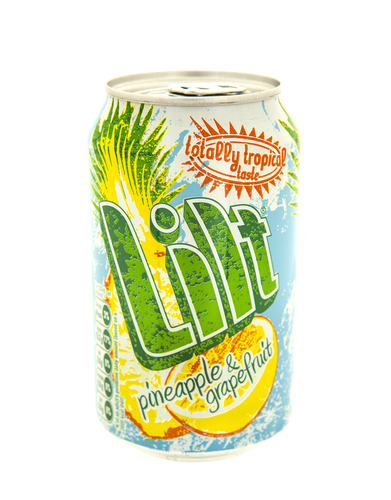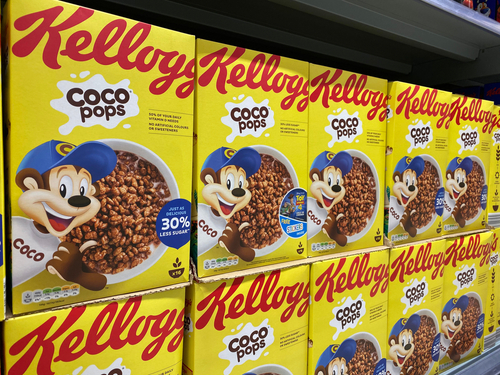Today, we mourn Lilt. The Coca-Cola Company has called time on the trade name for this fruity, refreshing drink. The “totally tropical taste” will live on, rebranded as “Fanta Pineapple and Grapefruit” but the name “Lilt”, along with its distinctive packaging, will cease to be.
The Lilt rebranding is aimed at boosting sales by aligning it with the popular Fanta range. The rebranding effort involves a complete overhaul of the product’s packaging and marketing.
As a business evolves and adapts to changing market conditions, rebranding may be necessary to refresh its image and better align the brand with its objectives. However, it can be a risky and expensive process. We take a look at a lesson from the past, and explore the pros and cons of a brand makeover for not-so-global businesses.
Beware beloved brands
Coca-Cola’s carbonated fruit drink offering is dominated by Fanta, which outsells Lilt by around 18 to 1. In light of these numbers, it’s easy to see why Coca-Cola would want to bring Lilt under the Fanta banner. However, it can be a mistake to underestimate the public’s affection for your secondary brands. A lesson from history involving a cereal-munching monkey demonstrates this point very well…
Don’t mess with the monkey
In 1997, Kellogg’s, manufacturers of Rice Krispies, attempted to bring their chocolate version of the rice-based cereal under the same banner. At great expense, they rebranded Coco Pops as Choco Krispies in an effort to bring the sub-brand into line. The move received a less-than-welcome reception, and sales plummeted.
While the recipe remained unchanged, what seemed to rile the brand’s audience the most was the fact that the name no longer fit comfortably in the famous jingle. Coco the monkey was now forced to sing “I’d rather have a bowl of Choco Krispies” – a bit of a mouthful.
The will of the people
The resulting tabloid uproar and public outcry led Kellogg’s to consider their position. But here’s where they struck marketing gold. Instead of performing a swift and discreet U-turn, Kellogg’s went public and announced a referendum on the name. Close to one million cereal fans voted, and the motion to revert to “Coco Pops” was carried by a 92% majority.
We may never know if the resulting publicity outweighed the cost of the rebrand, but Kellogg’s handling of the matter showed some serious commercial savvy. Their dynamic and resourceful decision-making meant that when they dropped the ball with one hand, they were able to catch it with the other.
Could it be that Coca-Cola are playing a longer game with us? Could the whole thing be a marketing ruse to revive passions for Lilt? Will the provocative rebranding ride the wave of public uproar until the Lilt brand is gloriously restored? Honestly, we doubt it given the strength of the Fanta brand, but we’d have to applaud Coca-Cola’s boldness if that were the case.
Tropical or toxic?
One reason for brands falling by the wayside is that they acquire negative associations among their audiences. That can be as a result of a catastrophic faux pas, or simply because they’ve grown less and less politically correct over the passing years.
Lilt has never been mired in controversy as such, but if we were actively seeking something problematic, we could point to the appropriation of Caribbean culture. In the past, the setting that provided the backgrounds to TV and press ads, and the caricatures of the Lilt Man, and later the Lilt Ladies, were deliberately aligned with Jamaican culture. That’s despite the fact that Lilt is only available in the United Kingdom, Ireland, Gibraltar and the Seychelles.
In the past, the setting that provided the backgrounds to TV and press ads, and the caricatures of the Lilt Man, and later the Lilt Ladies, were deliberately aligned with Jamaican culture. That’s despite the fact that Lilt is only available in the United Kingdom, Ireland, Gibraltar and the Seychelles.
Brand rehab
Could it be that Coca-Cola calculates that this element of the brand will only become less palatable over time? Not likely. In reality, such associations can be navigated away from with relative ease, a process that has in fact been ongoing since the 1990s. Even brands with genuinely problematic pasts can rehabilitate themselves without a change of name.

Robertson’s Jam endured decades of controversy before ditching the racial caricature that formed an integral part of their branding. Even after unapologetically “retiring” the Golly, the brand was able to continue by pursuing an alternative brand direction. The public can be forgiving of long-standing brands, as long as they’re seen to evolve in a way that’s sensitive to changing cultural climates.
Pros of rebranding
Most businesses aren’t as big as the Coca-Cola Company. But less baggage and lower overheads allow businesses to be more dynamic with their branding. Here’s why a change can be a good thing.
Renewed relevance
Over time, a business’s branding can become outdated and irrelevant to its target audience. Rebranding can help the business remain current and competitive in a fast-changing market, ensuring that it remains relevant to its customers.
Increased visibility
Rebranding can also help a business attract new customers by increasing its visibility. By refreshing its image and marketing, the business can reach out to new audiences and generate interest from potential customers.
Improved reputation
A rebranding effort can help improve a business’s reputation, particularly if it has undergone negative press or faced criticism. A successful rebranding effort can help the business overcome past issues and present a more positive image to the public.
Competitive edge
Rebranding can also give a business a competitive edge by setting it apart from its competitors. By differentiating itself in the market, the business can attract customers who are looking for something new and different.
Cons of Rebranding
Even small businesses work hard on their brands, and it’s hard to move on from something you’ve worked hard to establish. There are a number of less attractive factors that need to be considered ahead of a wholesale rebrand.
Costly
Rebranding can be an expensive process, particularly for small businesses that may not have the resources to invest in a complete overhaul of their image. The costs can include everything from design and marketing to legal fees associated with trademarking and re-registering the business.
Risky
Rebranding can also be a risky move, particularly if the business has a strong brand identity that is well-established in the market. A poorly executed rebranding effort can alienate existing customers and damage the business’s reputation.
Time-consuming
Rebranding can be a time-consuming process, requiring extensive research and planning. It’s vital to ensure that the new brand image aligns with business objectives and resonates with its target audience. This can take away valuable time and resources that the business could otherwise devote to other priorities.
Uncertain outcomes
Despite the best efforts of the business, there is no guarantee that a rebranding effort will be successful. Even if the new brand image is well received by the public, it may take time to see a positive impact on the business’s bottom line.
Rebranding can be an effective way for businesses to stay relevant and competitive in a rapidly changing market. However, it is important to consider the pros and cons before embarking on such a bold move. While a successful rebranding effort can bring renewed relevance, increased visibility, and improved reputation to a business. But it can also be costly, risky, time-consuming, and uncertain in terms of outcomes. As with any business decision, careful research and planning are key to making an informed choice.





